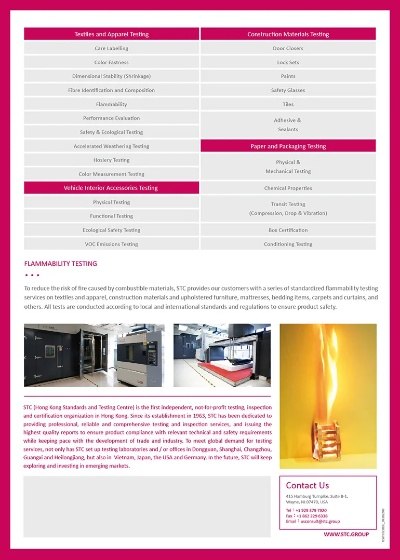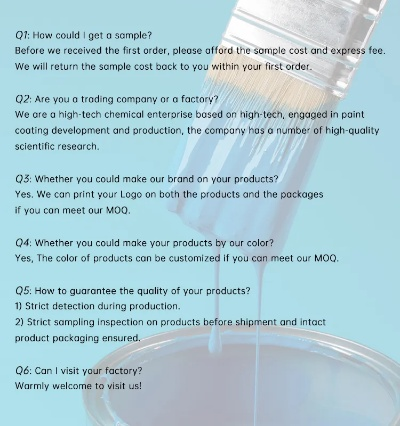Textile Moisture Resistance Testing:A Comprehensive Guide
This comprehensive guide to textile moisture resistance testing provides a detailed overview of the various methods and techniques used in assessing the durability of textile materials against water vapor permeation. The guide covers topics such as experimental design, sample preparation, test setup, data analysis, and interpretation of results, offering practical guidance for researchers and industry professionals interested in improving the performance of textile products. It also includes case studies and examples to illustrate the application of these principles in real-world scenarios. Overall, this guide aims to provide a valuable resource for anyone seeking to understand and enhance the moisture resistance properties of textile materials.
Introduction: The textile industry is a crucial sector in the global economy, producing a wide range of products that are used in various industries, from healthcare to fashion. One critical aspect of textiles is their ability to maintain moisture levels, which can affect the comfort and performance of clothing and other fabrics. Therefore, it is essential to conduct rigorous testing to ensure that textiles meet the required standards for moisture resistance. In this article, we will explore the different methods for evaluating textile moisture resistance and provide an example of how these methods can be applied to a real-world scenario.
Methodology: Textile moisture resistance testing involves several steps to evaluate the material's ability to retain or release moisture. The following are some common methods used in the industry:
-
Static Tensile Testing: This method involves stretching a sample of textile material and measuring the force required to break it. By comparing the breaking strength of samples with and without moisture, researchers can determine the material's resistance to tearing.

-
Wet/Dry Tensile Testing: This method involves subjecting a sample to a controlled environment with varying humidity levels. The sample's breaking strength is then measured before and after exposure to moisture.
-
Water Absorption Testing: This method involves measuring the amount of water absorbed by a textile sample over time. By analyzing the rate at which the sample absorbs water, researchers can assess its moisture absorption capabilities.
-
Water Retention Testing: This method involves measuring the amount of water retained by a textile sample after exposure to moisture. By comparing the amount of water retained by samples with and without moisture, researchers can determine the material's moisture retention capacity.
-
Water Vapor Permeability Testing: This method involves measuring the rate at which water vapor passes through a textile sample. By analyzing the sample's permeability to water vapor, researchers can assess its moisture transmission capabilities.
Example: Let's take the case of a new textile material that claims to have excellent moisture resistance. To test this claim, we could conduct static and wet/dry tensile testing on the sample. We would measure the breaking strength of the sample under both dry and wet conditions and compare the results to establish whether the material meets the required standards for moisture resistance. Additionally, we could also perform water absorption and retention tests to further validate the material's performance.
Conclusion: Textile moisture resistance testing is an essential part of the textile industry's quality control process. By using a combination of static and wet/dry tensile testing, water absorption and retention testing, as well as water vapor permeability testing, researchers can evaluate the material's moisture resistance capabilities. These tests not only help manufacturers develop products that meet customer expectations but also ensure that textiles remain comfortable and functional even in humid environments. As such, it is important for all stakeholders involved in the textile industry to adhere to proper testing procedures to promote the quality and safety of our garments and accessories.
随着现代生活水平的提高,人们对纺织品的需求日益增长,特别是在追求舒适度和保湿性能方面,纺织品的质量和性能直接影响到穿着体验和使用效果,对纺织品保湿性的测试显得尤为重要,本文将详细介绍纺织品保湿性测试的方法和案例,帮助消费者更好地了解纺织品保湿性能。
纺织品保湿性测试方法
实验原理
纺织品保湿性测试主要依据相关标准进行,通过模拟实际使用环境,测试纺织品在特定湿度条件下保持水分的能力,常用的测试方法包括吸水性测试、水分蒸发速率测试等。
实验步骤
(1)准备实验材料:选择符合标准的纺织品样品,准备必要的测试仪器和试剂。

(2)模拟环境:设置模拟使用环境,模拟室内外湿度条件。
(3)测试过程:进行吸水性测试、水分蒸发速率测试等,记录数据。
(4)数据分析:根据测试结果,分析纺织品在特定湿度条件下的保湿性能。
实验表格补充说明
以下是实验表格补充说明:
| 项目 | 测试指标 | 测试方法 | 参考标准 |
|---|---|---|---|
| 样品选择 | 选择符合标准的纺织品样品 | 根据实际需求选择样品 | 根据标准选择样品 |
| 仪器设备 | 吸水性测试仪、水分蒸发速率测试仪等 | 根据实验需求选择合适的仪器设备 | 根据相关标准选择仪器设备 |
| 环境模拟 | 室内外湿度条件模拟 | 根据实际使用环境设置模拟环境 | 根据实际需求设置模拟环境 |
| 测试条件 | 设定湿度范围、时间等 | 根据实验需求设定湿度条件和测试时间等参数 | 根据标准设定参数 |
| 数据记录 | 记录吸水性数据、水分蒸发速率数据等 | 根据实验记录数据 | 根据标准记录数据 |
| 结果分析 | 分析吸水性数据、水分蒸发速率数据等,评估保湿性能 | 根据数据分析结果评估保湿性能 | 根据标准进行结果分析 |
案例说明
纺织品保湿性能案例一:某品牌丝绸面料
该品牌丝绸面料采用天然蚕丝纤维制成,具有较高的保湿性能,在实验中,我们模拟了室内外的湿度条件,并进行了吸水性测试和水分蒸发速率测试,根据测试结果,该面料在特定湿度条件下具有较好的保湿性能,能够保持水分不易流失,该面料还具有柔软舒适的手感和良好的透气性。
纺织品保湿性能案例二:某品牌棉质衣物
该品牌棉质衣物采用优质棉纤维制成,具有较高的吸湿性和透气性,在实验中,我们模拟了室内外的湿度条件,并进行了吸湿性测试和水分蒸发速率测试,根据测试结果,该衣物在湿润环境下也能保持较好的穿着舒适度,适合各种气候条件,该衣物还具有较好的抗皱性和耐洗性。
纺织品保湿性是衡量纺织品质量的重要指标之一,通过本文的介绍和案例说明,消费者可以更好地了解纺织品保湿性能的相关知识,在选择纺织品时,可以根据自己的需求和实际情况选择符合标准的产品,也可以参考实验结果和案例分析,评估纺织品在特定湿度条件下的保湿性能。
Articles related to the knowledge points of this article:
The Dynamics of Chenxi Textile Industry in Guangdong:A Comprehensive Analysis
Exploring the Rich Tapestry of Textiles from Shaoxing,China
Textile Chlorination Test Standards and Case Studies
Exploring the Infrastructure of Shangrao Textiles Logistics
Exploring the Rich Tapestry of Textiles from Nantong Mei Nián Hua



